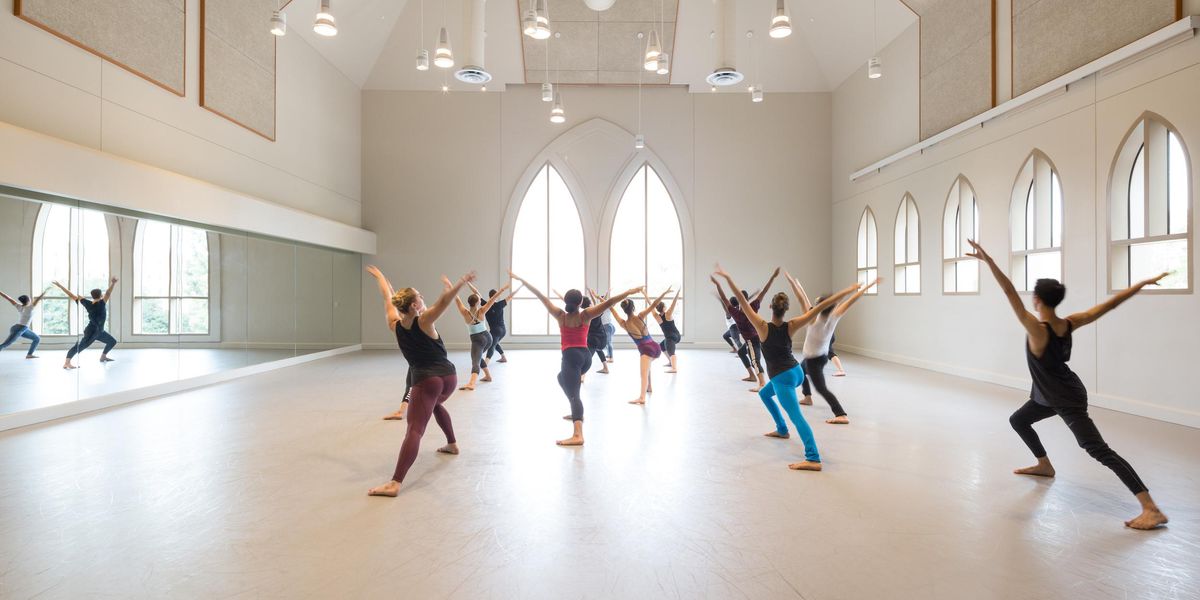If You’re Starting a Company, Shhhhh
Everyone knows it’s hard to keep a dance company going. And in this economy, it’s twice as hard. Sure, it’s nice when enterprising dance folks take the plunge to start new companies, but I wonder how many of these groups are going to last ten years, or even two?
Or if it’s desirable.
In 2008 two highly visible choreographers announced they were starting full time companies: Christopher Wheeldon and Trey McIntyre. At the time, knowing how big their freelance careers were, I wondered if they really could or would sustain a long-term company.
Christopher Wheeldon rehearses
Commedia with members of Morphoses in 2008.
Photo by Erin Baiano.
Less than three years later, Wheeldon made his exit from Morphoses, leaving it in the hands of his co-founder, Lourdes Lopez. (In her new position as director of Miami City Ballet, she says she’ll bring Morphoses into it.) And now McIntyre has announced that the Trey McIntyre Project, which transformed Boise, Idaho into a dance-loving town, will go in a new direction. Both artistic directors wanted to branch out in ways that make running a company a burden.
In Wheeldon’s case, he has continued his very busy life as a freelance choreographer. He’s now working on remaking An American in Paris for Broadway, which takes such a huge commitment that it would be impossible if he were still director of Morphoses. (OK, Bill T. Jones did that with Fela! in 2009 but when he received his Tony Award, he clearly felt guilty. When accepting the award, he gave a shout out to his company instead of mentioning any of the performers in Fela!)
Trey McIntyre rehearses with his company in 2010.
Photo courtesy of TMP.
Trey McIntyre wants to dabble in film and photography and shrink TMP to be a project-based entity.
I’m not saying that Wheeldon or McIntyre should stick it out just to finish what they started. (Or for that matter Benjamin Millepied, who will have to leave his L.A. Dance Project soon in order to run Paris Opera Ballet; or Liz Lerman, who left her Dance Exchange to get involved in other collaborations.) The opportunities for such luminaries underline what a different world we live in. Not only are companies hard to sustain economically, but for sought-after choreographers, other technologies and modalities open up for them.
Liz Lerman in rehearsal with members of her Dance Exchange.
Photo by John Borstel.
What are we losing when companies fold or almost disappear? Let’s look at some of the long-running companies that still have their founders.
Lar Lubovitch just celebrated the 45th year, and Garth Fagan passed 40 a few years ago. Margaret Jenkins Dance Company in San Francisco is celebrating its 40th year now. Also in the Bay Area, Alonzo King’s LINES Ballet crossed the 30 mark last year. Both Bill T. Jones’ company and Stephen Petronio’s are currently in their 30th year, and the Mark Morris Dance Group passed that number in 2010. That year Ronald K. Brown’s Evidence reached 25. Of course, the longevity laurels go to Paul Taylor, who celebrated his company’s 50th anniversary in 2005.
For a previous generation, sustaining a company was a noble goal and an accomplishment. Each of these companies produced new work while keeping their classics alive. They supported dancers for years, and they became as close-knit and nourishing as families.
But that is not necessarily the goal of choreographers today.
As choreographer/consultant Sydney Skybetter has written, it’s a different world now. Companies with a long track record are becoming rare. I’ve even heard the term “post-company” as in, “It’s a post-company world.” But Skybetter goes on to say that the dance skies look more open than before because technology and new, more fluid and less stable structures, make the dance world today a place of opportunity.
My advice: Think twice about starting a “company.” And if, given the changing dance landscape, that is still what you want, don’t announce it—just do it. And keep yourself open for whatever else comes along. But be honest with your dancers about your, and their, options.




